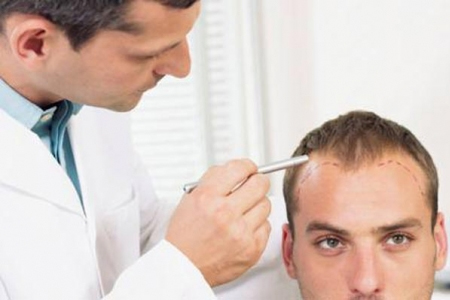The primary technique of hair transplant used in the last century was known as the ‘plug method’. The surgeons were astounded to discover that the hair which is transferred from the donor site to the hair-loss affected site actually grew, and grew permanently, throughout the person’s life. This marked the New Era of Permanent Hair Restoration in the field of Plastic Surgery. The Plug method consisted of large plug-like batches of hair which were extracted from the donor site and inserted into the affected areas however the final outcome very much resembled the ‘cabage patch doll’ hair which in fact did not look natural or aesthetically pleasing. The extraction punches were quite large in diameter, ranging from 6 mm to 4 mm as the method advanced. Because the manual excision punches were quite large, the post procedure healing time was prolonged anywhere from three to six weeks.
| 4 mm punch for extraction of XXL Large Grafts | |
|---|---|
 |
|
| Un-Natural Looking Results | Doll-Like Appearance was standard with past methods |
 |
 |
The plug method eventually started dying out as patients could not decide which is worse, being bald or having a ‘Cabage-Patch’ Doll-like appearance.
However, hair transplant surgery evolved dramatically over the past decade and now we have very refined outpatient procedures that produce full and natural looking results, and that too in a single session. Hair follicles or grafts are typically transplanted using either of these two techniques:
- Follicular Unit Hair Transplantation (FUT): Also known as strip method transplant, it involves removing hair follicles in the form of a linear strip from the donor area.
- Follicular Unit Extraction (FUE): It is themost advanced technique used for surgical hair restoration in which individual hair units are extracted directly from the donor site using a micro-punch tool, and transplanted to hairless or thinning areas.
These hair transplant techniques not only give natural looking hairline but also the perfect hair density. And the best thing about this type of hair restoration is that the transplanted hair is baldness resistant and does not fall out.
Since every individual’s hair loss pattern is different, a single hair transplant technique may not be suitable for each alopecia patient. Only an experienced cosmetic surgeon can help you determine which technique is best for you, or if a combination of FUT and FUE will give you the desired results.




